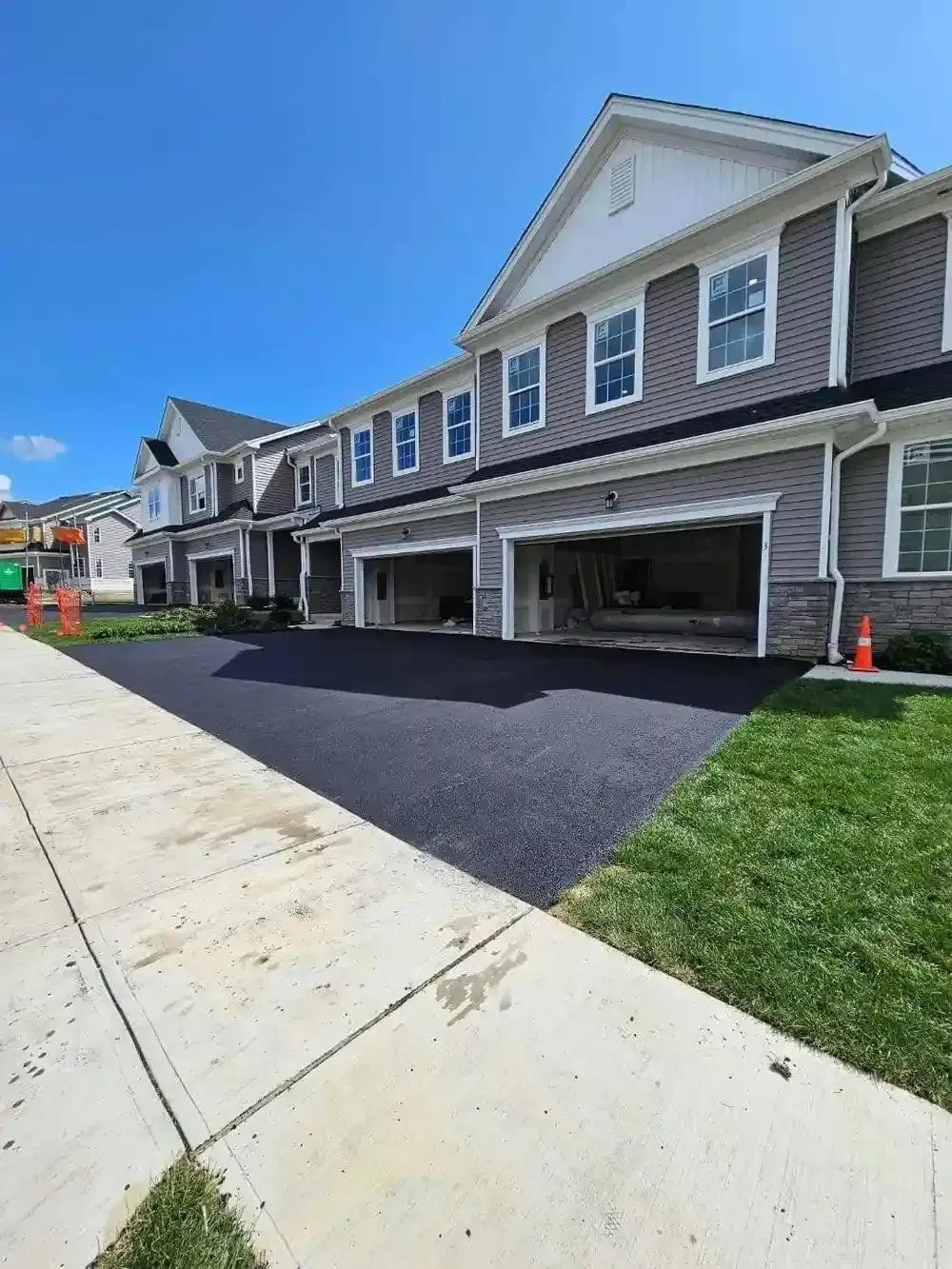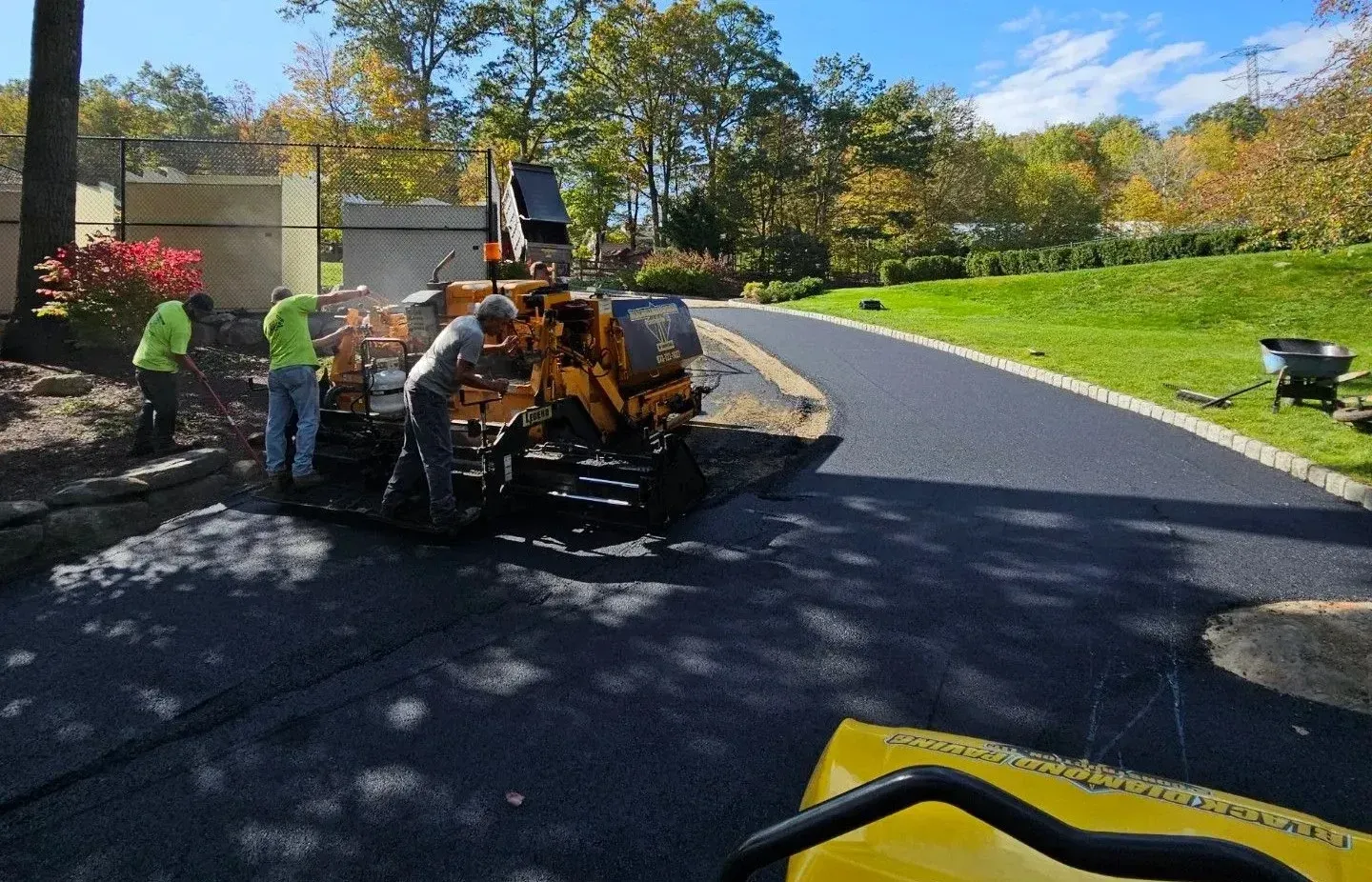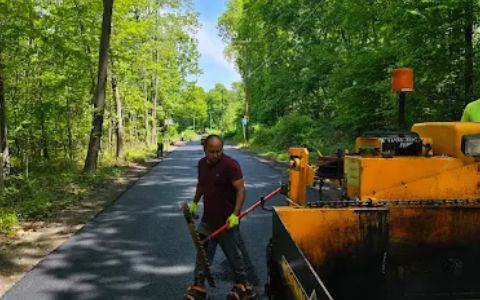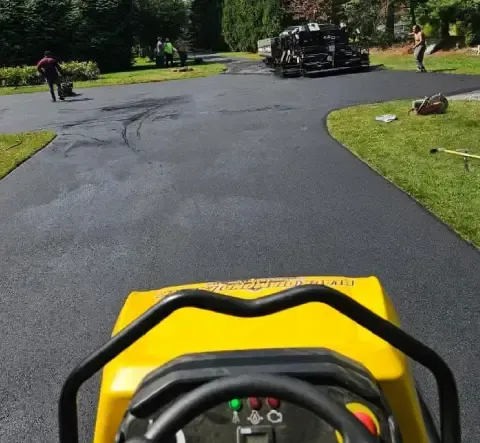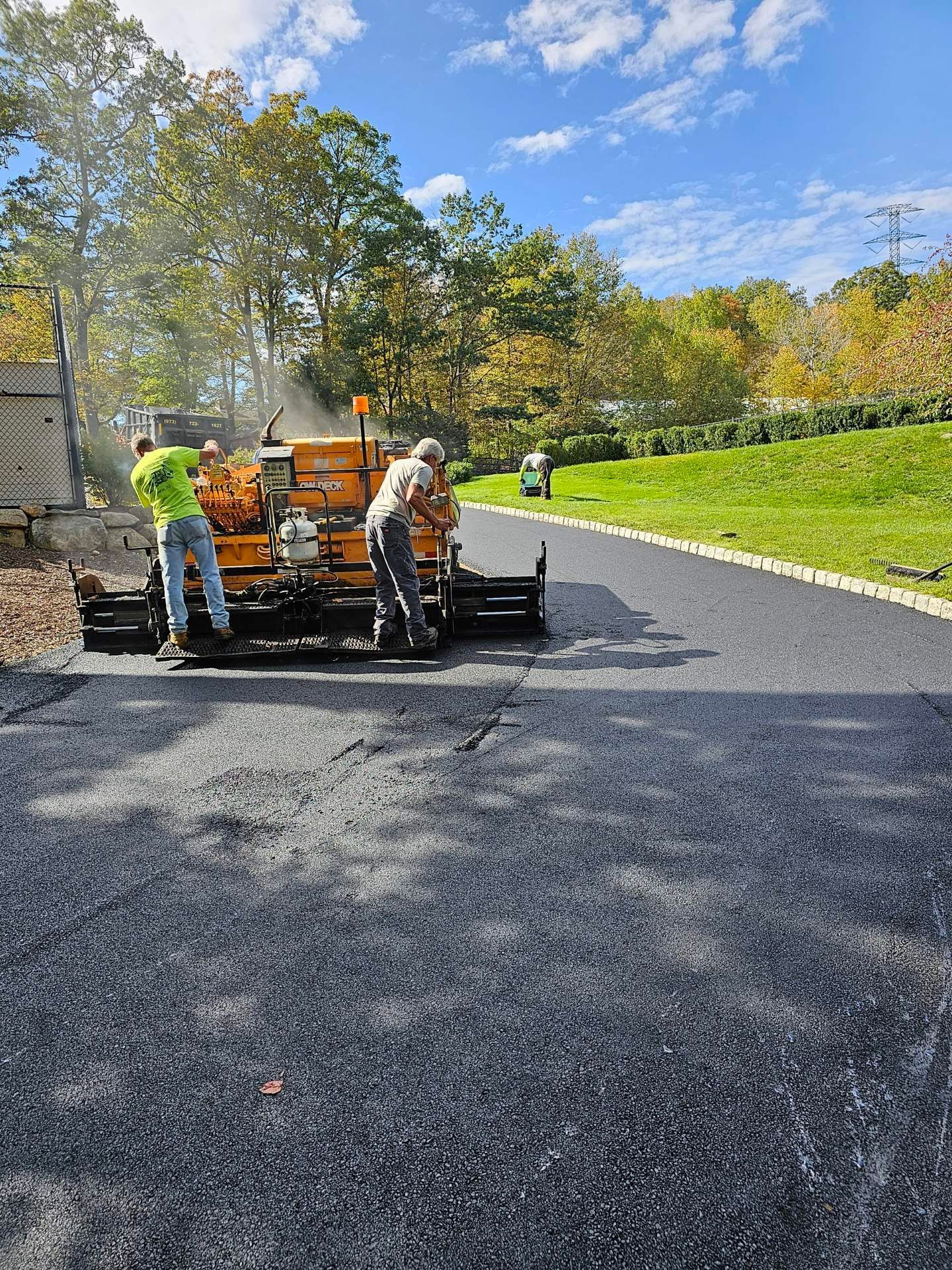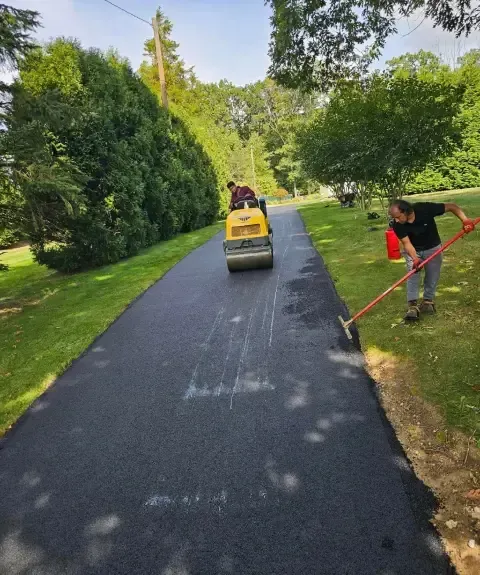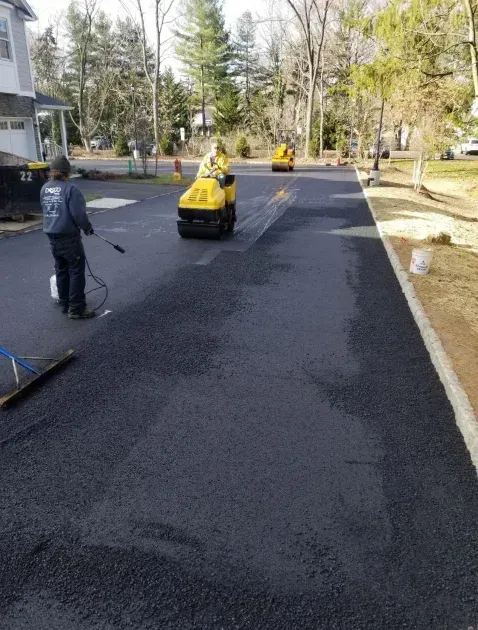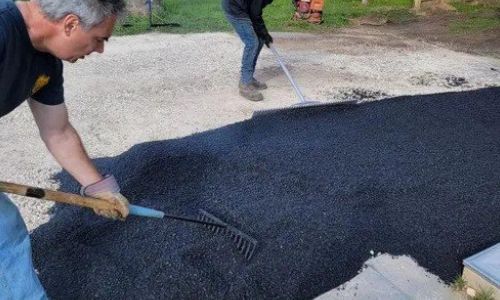Understanding the Paving Process: From Preparation to Completion
Black Diamond Paving & Construction has been a pillar of New Jersey's infrastructure for over two decades. We construct driveways, parking lots, and township roads that endure. We understand that starting a paving project raises questions. What really happens between receiving the quote and driving over the shiny, final black surface?
The key is in a systematic, multi-step approach in which each step relies on the previous step. Real quality in asphalt paving is created from an uncompromising commitment to the little things that occur well before asphalt ever makes it to the site.
Phase 1: Site Evaluation and Preparation
The lifespan of a paving project is decided here, at the outset. Better outcomes require thorough preparation, a standard that we have established our name on.
Meticulous Site Inspection
Our process begins with a thorough evaluation of your property. We look at the existing surface for signs such as alligator cracking or recurring potholes. Knowing the drainage patterns of your site is of primary concern. For new land-clearing jobs, we conduct an in-depth evaluation of soil and existing grade.
Demolition and Removal
IThe damaged pavement in place should be completely excavated. Our team employs specialized equipment like forklifts and dump trucks to displace the ground. When the foundation is stable but the surface is worn out, asphalt milling offers a clever option. Our millers grind the top layer precisely, providing an excellent, flat substrate for the new asphalt. No disrupting the important existing grade and drainage channels.
Grading and Slope
The right grade is crucial to the longevity of pavement. We model the underlying sub-grade with the latest motor graders and laser technology to form a solid base. We deliberately create a specific slope to direct water away from the surface, as the best protection against the degradation of asphalt is controlling water runoff.
Stabilizing the Sub-Base
This layer carries the full weight of your pavement. We start by compacting the natural soil to its maximum density. A layer of base aggregate, usually crushed stone, is applied and mechanically compacted next. This establishes a solid, unmovable foundation that will stop future sinking, moving, and structural cracking.
Phase 2: Asphalt Installation and Finishing
The attention turns to installing and finishing with a new asphalt surface with accuracy.
Tack Coating
We perform a tack coat on the prepared base before new installation. It is a liquid layer of asphalt that serves as a strong bonding agent. It is an important procedure, ensuring that the new mat sticks properly to the base without separating and failing in the future.
Asphalt Placement
Hot mix asphalt is transferred from the plant and laid with a specialized paver. The machine disperses the material to a uniform depth and temperature for the first smooth surface. Our experienced operators closely watch the process, ensuring even thickness and texture throughout the site.
The Initial Compaction
Compaction starts right after laying while the asphalt is still hot. A steel-wheel roller with vibration follows behind the paver to attain initial density. This critical process removes air pockets and starts interlocking the asphalt aggregate.
Final Compaction
The second roller, typically a pneumatic or static steel-wheeled unit, finishes the compaction. The final pass seals the surface and produces the desired density, and provides the characteristic smoothness for which our work is known. Proper compaction must be done to produce a hard, rut-resistant surface that meets expectations for years to come.
Phase 3: The Finishing Touches
The pavement has been laid down, but the project ends with a few important steps that improve both function and lifespan.
Curing Time
New asphalt needs some time to fully cure and harden. Although the surface will be cold and firm to the touch within a few hours, it still develops strength for several days. We give you specific guidance on when your new pavement will be safe for normal traffic flow.
Crack Filling and Repair
Prior to the application of any protective seal, the new surface is also checked for small defects. Our crack repair and filling service fixes these tiny weaknesses ahead of time, preventing them from becoming huge issues by sealing water intrusion.
Seal Coating
Once the asphalt has cured completely, seal coating is strongly advised. The protective coating serves as a shield against the elements: UV rays, water, and automotive fluids such as oil and gasoline. It also resurfaces with a deep, black color that substantially enhances curb appeal.
Line Striping and Marking
The last thing for any parking lot or court construction project is the installation of line striping and markings. We use commercial equipment to apply high-visibility, durable traffic paint. This marks parking spaces, direction arrows, and other safety icons so your area is an organized, secure, and effectively utilized space.
Your New Jersey Paving Partner for Life
Black Diamond Paving & Construction considers our work to be an investment in your property for the long term. Our full-service approach, from septic and drainage solutions and land clearing to asphalt resurfacing, is supported by more than two decades of local expertise. Understanding the nuances of the paving process allows you to value the importance of genuine craftsmanship. When it is time to proceed with your project, rely on the experts at Black Diamond Paving & Construction to provide exceptional results.
Frequently Asked Questions (FAQs)
1. How long will my commercial parking lot project last?
Schedules are project-dependent. Re-striping and seal coating may take 1-2 days to finish. A complete rebuild with milling and fresh asphalt will take a week or more. We leave you with a clear, explicit schedule during our initial consultation.
2. Why can't we pave over existing, cracked asphalt?
Paving on top of a deficient base is a temporary fix. The old layer's cracks will soon show through the new surface. A well-cemented, stable base is necessary to spread loads and keep the new pavement from failing early. Excellent preparation is what makes a lasting installation.
3. When is it safe to drive on my new asphalt driveway?
Avoid all traffic on the new surface for at least 24 to 48 hours. Once that time has passed, regular driving can again be done, but we recommend avoiding sharp turns or sitting in the same place for long periods within the first week, as the material is still curing and drying.
Recent Posts


